
-
![NC State University Logo]()
Shichen Yin, Organic Electronic Materials and Devices Laboratory (OEMDLab), NC State University
“I have used the Setfos to aid OLED optical design for over three years. Overall, the experience is good since it is easy to use and in good agreement with experimental results.”
-
![Universiyt of St. Andrews Logo]()
Dr Lethy Krishnan Jagadamma, Leader of the Energy Harvesting Research Group, University of St Andrews, UK
“In our Energy Harvesting Research Group, we have started using both PAIOS and SETFOS for the characterization of perovskite solar cells very recently. We find both tools very helpful in understanding the device physics of perovskite solar cells and different kinds of charge carrier losses through recombination. The multitude of characterization facilities such as light intensity-dependent J-V, Capacitance-Voltage measurement, transient photovoltaic and transient photocurrent, impedance measurement and charge transport characterization such as SCLC and CELIV all integrated into one set-up is so versatile to give an overview of different loss mechanisms and strength of one device structure over the other. Our research is particularly focussing on indoor photovoltaic development where the carrier management is stringent due to the low intensity and low carrier concentration. We have found PAIOS an excellent supportive tool to enhance our research.”
-
![Ming Chi University Logo]()
Prof. Shun-Wei Liu, Department of Electronic Engineering & Organic Electronic Research Center, Ming Chi University of Technology, Taiwan
“Setfos is a very powerful simulation tool developed by Fluxim predominantly in the field of OLED and OPV researches. We are heavily dependent on this simulation tool regarding our research activities in OLED and OPV as evident in our publications. Setfos not only helps us in optimizing the device structures prior to device fabrication experimentally but also assists in analyzing the device physics through the simulation on the contribution of the various optical modes in the device as well as estimating the important parameters such as color co-ordinates, angular dependence, reflection and transmission co-efficient etc. Undoubtedly, Setfos takes an important role in the progress OLED and OPV researches.”
-
![Dupont Logo]()
Dr. Ian Parker, Materials Development Manager DuPont Displays, Santa Barbara, USA
“The software Setfos is an outstanding program for assisting in the development of OLED displays. It provides the predictive capabilities, and physical insight into the optical performance that is needed to optimise your design. It's a fast and powerful package that a user will immediately benefit from. “
-
![Fudan University Logo]()
Ruichen Yi, Fudan University
“The latest version of SETFOS is really nice with all the new features, especially the addition of IMVS, so thanks for that”
-
![Swansea University Logo]()
Dr Ardalan Armin, Ser-SAM group, Department of physics, Swansea University
“We have extensively used both SETOS and LAOSS in our recent endeavor to model large-area OPV and OLED devices. The intuitive workflow of both software packages allows us to quickly try out new ideas before realising them experimentally.“
-
![Jülich University Logo]()
Dr Sandheep Ravi Shankar, Forschungszentrum Jülich GmbH
“ I highly recommend SETFOS, which I mostly use for simulating and understanding both time (TPV, TPC) and frequency domain (IMVS, IMPS and IS) measurements on perovskite solar cells. The user interface is easy to use and manipulate in combination with the scripting and sweep features, allowing to set up and simulate complex experiments easily. The engineers and scientists at Fluxim also provide excellent support and have been very helpful with any questions and clarifications asked of them.”
-
![]()
Prof. Chihaya Adachi, Director of OPERA, Kyushu University, Japan
"Setfos developed by Fluxim AG is a very useful software for the use of simulation of the optical and electrical properties of OLEDs. It contributes hugely to OLED and OPV research and it is a widely utilized tools by many researchers. We have used this simulation tool for the determination of recombination zone and outcoupling efficiency, and it helps us optimize our OLEDs with desired emission color, best efficiency and best device stability."
-
![Ningbo University Logo]()
Dr. Ding, OLED simulation team, Ningbo Research Institute, China
“Our team purchased the optical and electrical modules of Setfos. The operation interface of the software is intuitive, friendly, and easy to operate. The software itself contains rich information within a large material database. In the OLED device simulation process, we can simulate the emission spectrum of OLED, and simultaneously the recombination zone of charge transfer and drift spread. It can also help us to modify the design of device structure and can effectively analyze and improve the OLED device efficiency. The results calculated by Setfos could be served as a good reference point for our scientific research. We would highly recommend you consider Setfos as the option. “
-
![CSIRO logo]()
Dr Gregory J. Wilson, Research Group Leader, CSIRO Energy, Newcastle, Australia
“Paios and Setfos have been an asset to our research capability in CSIRO Energy and a key tool in our research and assessment of next generation thin-film photovoltaics, in particular, organic and perovskite solar cells. One of the key points of differentiation – and a clear attraction – has been the flexibility of the system and the ease in which user-defined experiments can be created. Our Team has appreciated the interaction with Fluxim and realised this has been much more than a transactional experience – we’ve formed a real partnership between developers and researchers.”
-
![Novaled Logo]()
Dr. Jan Blochwitz-Nimoth CTO Novaled AG, Dresden, Germany
“The setfos software is a fundamental optical simulation tool for the development of highly efficient OLED structures. New features of this software like including several different emission zones are of major importance for developing efficient white light OLED structures containing more than one emitting material. The flexibility, speed, and reliability of this software combined with its huge variety of simulation tools concerning various physical key quantities like angular dependence, color coordinates, or reflection spectra allow further improvement and basic insight of OLEDs.”
-
![ZHAW logo]()
Dr. Markus Regnat, ZHAW School of Engineering, Switzerland
“As an OLED researcher, I am very thankful for the Fluxim tools we have in our Group at ZHAW. Thanks to Paios and Phelos I can characterize my OLEDs in various regimes, such as transient, frequency, or steady-state and angle-dependent, and this all by just a few clicks. Thanks to the simulation software Setfos I can set up an electro-optical device model to reproduce the experimental data, which helps me to understand better the physics inside the OLED. Knowing the emission zone or the charge carrier distribution of an OLED can give you hints on efficiency or lifetime improvements.”
-
![SooChow University Logo]()
Prof. Dr. Jianxin Tang, Soochow University, Suzhou, China
“As an advanced optical simulation software, Setfos provides great opportunities for researching optical features both in light-emitting diodes (LEDs) and solar cells. The operation of Setfos is quite clear and easy. Moreover, it gives us useful physical insights of light manipulation when we design our optoelectronic devices. Our experimental data and theoretical analysis have been well demonstrated via simply modelling and computing with Setfos. It is truly a recommendable tool for studying LEDs and solar cells.”
-
![Stanford University Logo]()
Jon Bartelt, Stanford University, Stanford CA, USA
“Setfos is a great product for researchers who want to simulate the performance of organic solar cells without having to design and build custom simulation software. By licensing Setfos, we were able to quickly answer many research questions and publish results in a matter of months.”
-
![National Institute of Technical Teachers' Training & Research logo]()
Dr. Rajesh Mehra, Head of Electronics & Communication Engineering Department, National Institute of Technical Teachers' Training & Research
“Setfos is an efficient design and simulation tool for Organic LEDs and Solar Cells. Our post graduate and PhD scholars are using it and found it useful for their research work in related areas. I have no hesitation in recommending it to faculty & students for their research work.”
-
![Holst Centre Logo]()
Dr. Stephan Harkema, Senior Researcher, Holst Centre / TNO, Eindhoven, the Netherlands
“At the Holst Centre, in the OLED Lighting program, the Setfos modeling tool has proven its worth by enabling accurate predictions of light emission from OLEDs on glass, plastic and metal substrates. I have experienced firsthand that this sophisticated and user-friendly software package can be used to interpret measurements and extract the relevant parameters efficiently. Such information is essential in order to improve light emission from novel OLED device designs. Fluxim also provides excellent customer support by hosting annual workshops, providing assistance whenever requested and by inquiring what features are considered valuable and essential.”
-
![University of California, Santa Cruz Logo]()
Dr. Janelle Leger University of California Santa Cruz, USA
“I have used Setfos extensively to investigate the emission zone in polymer light-emitting diodes and electrochemical cells. The speed, reliability, and flexibility of this software make it ideal for a wide range of applications, particularly in the optimization of device structures or in the fundamental research of device physics.”
-
![The word 'microoled' with the 'oo' in orange gradient color.]()
Dr. Benoit Dugrenil, Ingénieur R&D OLED, Microoled
I'm using Setfos from more than 8 years now. It's really an essential tool we're using each days. We are using it to :
- design OLED stacks, taking into account emitter intrinsic spectra, n&k transport and blocking layers
- each time we need to adjust OLED optical cavity
The software is really user friendly. We are not using the electrical addon but maybe it could be interesting too.
-
![Institute of Materials Research and Engineering logo featuring a stylized star and a swooping line]()
Dr. Ng Ging-Meng, Research Staff Member, Institute of Materials Research & Engineering (IMRE), A*STAR, Singapore
Setfos is a very convenient tool to be used to predict the optical and electrical outcome from OLED and OPV devices. It also shows a physical insight of the charge transport properties in organic electronic system. The user interface is friendly, and it is an ideal tool for optimization of organic device structures.
Recent Solar Cell Publications Enabled with Setfos
View 250+ papers published with Setfos and all our research tools
Alberti, A., Valastro, S., Calogero, G., Mannino, G., Smecca, E., Spampinato, C., Bongiorno, C., Naselli, E., Finocchiaro, G., Pidatella, A., Mascali, D., & La Magna, A. (2025), Low-Cost Self-Powered Mesoporous Perovskite Devices for Stable High-Dose-Rate Fast-Response X‑ray Detection. ACS Applied Electronic Materials, 7, 6428−6439.
Magliano, E., Di Giacomo, F., Sathy, H.R., Pourmotlagh, S.M., Giliberti, G., Rodriguez, D.B., Ammirati, G., Mariani, P., Zarotti, F., Matteocci, F., Luce, M., Usatii, I., Bobeico, E., Della Noce, M., Cricenti, A., Cappelluti, F., Mercaldo, L.V. and Di Carlo, A. (2025), Solution-Processed Metal-Oxide Nanoparticles to Prevent The Sputtering Damage in Perovskite/Silicon Tandem Solar Cells. ACS Applied Materials & Interfaces, 17, 17599−17610.
Sandberg, O.J., Kumar, M., Stolterfoht, M., Neher, D. and Armin, A. (2025), Analytical model for interface recombination limited ideality factors in p-i-n perovskite solar cells. APL Energy, 3: 036107.
Kang, B. and Yan, F. (2025), Emerging strategies for the large-scale fabrication of perovskite solar modules: from design to process. Energy Environ. Sci., 18: 3917.
Singh, A. and Gagliardi, A. (2025), Drift-diffusion modeling of perovskite solar cells: past and future possibilities. EES Solar. DOI:
Kirchartz, T. (2025), Challenges and opportunities for the characterization of electronic properties in halide perovskite solar cells. Chem. Sci., 16: 8153.
Afshari, H., Mapara, V., Sourabh, S., Khanal, M. N., Whiteside, V. R., Scheidt, R. A., Beard, M. C., Eperon, G. E., Sellers, I. R., & Furusa, M. (2025), Hot carrier dynamics in operational metal halide perovskite solar cells. EES Solar.
Kay, A.M., Riley, D.B., Burwell, G., & Meredith, P. (2025), Thermodynamic principles for optimizing multi-junction photovoltaics—Exemplified for perovskite-based indoor photovoltaics. APL Energy, 3, 036102.
Tian, J., Liu, C., Forberich, K., Barabash, A., Xie, Z., Qiu, S., Byun, J., Peng, Z., Zhang, K., Du, T., Sathasivam, S., Macdonald, T.J., Dong, L., Li, C., Zhang, J., Halik, M., Le Corre, V.M., Osvet, A., Heumüller, T., Li, N., Zhou, Y., Lüer, L. & Brabec, C.J. (2024), Overcoming optical losses in thin metal-based recombination layers for efficient n-i-p perovskite-organic tandem solar cells.
Aranda, C. A., Li, W., Martínez-Ferrero, E., Pistor, P., Oskam, G., Palomares, E., & Anta, J. A. (2025), Insights from Impedance Spectroscopy in Perovskite Solar Cells with Self-Assembled Monolayers: Decoding SAM’s Tricks. J. Phys. Chem. Lett., 16: 2301−2308.
Aeberhard, Urs; Blülle, Balthasar; Zeder, Simon; Ruhstaller, Beat (2025). Optimizing Perovskite LEDs and Tandem PV Cells: The Role of Photon-Recycling and Luminescent Coupling in Presence of Strong Light Scattering. AIP Publishing. Collection.
Wang, Y., Hüpkes, J., Ravishankar, S., Klingebiel, B. and Kirchartz, T. (2025), Loss Analysis of Halide-Perovskite Solar Cells Deposited on Textured Substrates. Sol. RRL, 9: 2400829.
Gutierrez-Partida, E., Rusu, M., Zu, F., Raoufi, M., Diekmann, J., Tokmoldin, N., Warby, J., Menzel, D., Lang, F., Shah, S., Shoaee, S., Korte, L., Unold, T., Koch, N., Kirchartz, T., & Neher, D., Stolterfoht, M. (2025). Toward understanding the built-in field in perovskite solar cells through layer-by-layer surface photovoltage measurements. ACS Applied Materials & Interfaces, 17(7), Article 7.
Moia, D., & Maier, J. (2025). Defect chemistry of mixed ionic-electronic conductors under light: Halide perovskites as master example [Preprint]. arXiv.
Alsulami, Q.A., Redoy, R.A. & Wageh, S. Efficiency optimization of lead-free CH3NH3SnI3-based perovskite solar cells through material and structural modifications. Sci Rep 15, 13170 (2025).
Perera, W. H. K.; Zhou, Y.; Webb, T.; Trindade, G. F.; Xu, Y.; Zhu, J.; Masteghin, M. G.; Harvey, S. P.; Macdonald, T. J.; Jenatsch, S.; Dai, L.; Sathasivam, S.; Hinder, S. J.; Stranks, S. D.; Jayawardena, K. D. G. I.; Zhao, D.; Zhao, Y.; Zhang, W.; Haque, S. A.; Silva, S. R. P.
Energy Environ. Sci. 2025, 18, 439–453
M. A. Torre Cachafeiro, E. L. Comi, S. Parayil Shaji, S. Narbey, S. Jenatsch, E. Knapp, W. Tress, Adv. Energy Mater. 2025, 15, 2403850.
J. Roy, M. Forzatti, A. Martín, I. Ara, E. Stanzani, S. Jenatsch, H. J. Bolink, S. Fuertes, D. Tordera, V. Sicilia, Adv. Optical Mater. 2025, 2500051.
Edoardo Stanzani, Stefano Sem, Simon Züfle, Beat Ruhstaller, Sandra Jenatsch,
Organic Electronics, Volume 139, 2025, 107204, ISSN 1566-1199
Benjamin T. Feleki, Christ H. L. Weijtens, Martijn M. Wienk, and René A. J. Janssen
ACS Appl. Energy Mater. 2021, 4, 3033−3043
E Knapp, M Battaglia, T Stadelmann, S Jenatsch, B Ruhstaller
8th Swiss Conference on Data Science, Lucerne, Switzerland, 9 June 2021
J. I. Khan, S. Alsaggaf, R. S. Ashraf, B. Purushothaman, N. Chaturvedi, I. McCulloch, F. Laquai
Phys. Stat. Sol. (RRL) (2021)
Recent OLED Research Enabled by Setfos
Tang, S., Tsuchiya, Y., Wang, J., Adachi, C. and Edman, L. (2025), White light-emitting electrochemical cells based on metal-free TADF emitters. Nature Communications, [N/A]: Article 55954-3.
Pizano, A., Lampande, R., Cawthorn, R., & Giebink, N. C. (2025). Drift-diffusion modeling of blue OLED degradation. Synthetic Metals, 311, 117797.
Uçar, E., Ülkü, A., Kaya, H.M., Serin, R.B., Kaçar, R., Oral, A.Y. and Menşur, E. (2025), Impact of Layer Materials, Their Thicknesses, and Their Reflectivities on Emission Color and NVIS Compatibility in OLED Devices for Avionic Display Applications. Micromachines, 16, 191.
Cho, H., Kim, G.H., Lee, W.J. and Kim, Y.H. (2025), Optimizing OLED performance on polyimide substrates: Evaluation of ITO and organic layer thicknesses with different encapsulation materials. ETRI Journal, 1–10
Zhang, Y., Wang, W., Zheng, F., Zhu, J., Mei, G., Ye, Y., Tan, J., Zhang, H., Jing, Q., He, B., Wang, K. and Wu, D. (2025), Waveguide Coupled Full-Color Quantum Dot Light-Emitting Diodes Modulated by Microcavities. Photonics, 12, 427.
Schmidt, M.C., Alvarez, A.O., Pallotta, R., Seid, B.A., de Boer, J.J., Thiesbrummel, J., Lang, F., Grancini, G. and Ehrler, B. (Preprint), Quantification of mobile ions in perovskite solar cells with thermally activated ion current measurements.
Drift-diffusion modeling of blue OLED degradation by Pizano, A., Lampande, R., Cawthorn, R., & Giebink, N. C. was published in Synthetic Metals (Vol. 299, 2024, Article 117797). This study uses Setfos to simulate luminance loss and voltage rise in blue OLEDs, comparing drift-diffusion modeling with a traditional rate-equation approach.
Aeberhard, Urs; Blülle, Balthasar; Zeder, Simon; Ruhstaller, Beat (2025). Optimizing Perovskite LEDs and Tandem PV Cells: The Role of Photon-Recycling and Luminescent Coupling in Presence of Strong Light Scattering. AIP Publishing. Collection.
J. Roy, M. Forzatti, A. Martín, I. Ara, E. Stanzani, S. Jenatsch, H. J. Bolink, S. Fuertes, D. Tordera, V. Sicilia, Surfing the Color Map with Carbazole-Appended Cyclometalated N-Heterocyclic Carbene Pt Complexes and Their Application in Green Organic Light-Emitting Devices. Adv. Optical Mater. 2025, 2500051.
Tang, S., Tsuchiya, Y., Wang, J. et al. White light-emitting electrochemical cells based on metal-free TADF emitters. Nat Commun 16, 653 (2025).
H. Cho, G. H. Kim, W.-j. Lee, and Y.-H. Kim, Optimizing OLED performance on polyimide substrates: Evaluation of ITO and organic layer thicknesses with different encapsulation materials, ETRI Journal (2025), 1–10
E. Pakhomenko, S. Martin, S. He, A. Kapur, R. J. Holmes, Controlling Polarization-Induced Polaron Accumulation in OLEDs via Device Design. Adv. Funct. Mater. 2025, 35, 2412329.
L. S. C. Pingree, B. J. Scott, M. T. Russell, T. J. Marks, M. C. Hersam; Negative capacitance in organic light-emitting diodes. Appl. Phys. Lett. 14 February 2005; 86 (7): 073509.
Hyunsu Cho, Dae Hyun Ahn, Sukyung Choi, Gi Heon Kim, Chul Woong Joo, Chan-mo Kang, Jin-Wook Shin, Kukjoo Kim, Byoung-Hwa Kwon, Chunwon Byun, Nam Sung Cho, Young Jae An, Jin Sun Kim, Hyoc Min Youn,
Strategic use of dopants and device structure optimization for enhanced color gamut and efficiency in organic light-emitting diodes microdisplay applications, Optical Materials, Volume 159, 2025, 116571, ISSN 0925-3467,
J. Roy, M. Forzatti, A. Martín, I. Ara, E. Stanzani, S. Jenatsch, H. J. Bolink, S. Fuertes, D. Tordera, V. Sicilia, Adv. Optical Mater. 2025, 2500051.
Edoardo Stanzani, Stefano Sem, Simon Züfle, Beat Ruhstaller, Sandra Jenatsch,
Organic Electronics, Volume 139, 2025, 107204, ISSN 1566-1199
Hye In Yang, Jang Hyuk Kwon, et al.
Organic Electronics, Volume 89, 2021, 106031, ISSN 1566-1199
Dong Li, Jingwen Feng, Youqin Zhu, Zhigao Lu, Chen Pei, Zhuo Chen, Yanzhao Li, Xinguo Li & Xiaoguang X
Nano Res. (2021)
Hyunsu Cho, Jinouk Song, Jin-Wook Shin, Jaehyun Moon, Byoung-Hwa Kwon, Jeong-Ik Lee, Seunghyup Yoo, and Nam Sung Cho
Optics Express (IF3.894), Pub Date : 2021-07-07
Junmo Kim, Jeong Ha Hwang, Yong Woo Kwon, Hyeong Woo Bae, Myungchan An, Wonho Lee, Donggu Lee,
Organic Electronics, Volume 97, 2021, 106261
T. Ichikawa, A. Takagi, N. Yamada, K. Itonaga, H. Nakanotani, C. Adachi
Proceedings Volume 11788, Digital Optical Technologies; 117880P (2021)
Hyeong Woo Bae, Yong Woo Kwon, Myungchan An, Junmo Kim, Jang Hyuk Kwon, and Donggu Lee
ACS Appl. Electron. Mater. 2021, 3, 7, 3240–3246
Setfos Videos
OLED Design and Optimization with Setfos
SETFOS Modules
EMISSION
In this video tutorial, Dr. Urs Aeberhard demonstrates how to design, simulate and optimize an organic solar cell.
In this video tutorial, Dr. Urs Aeberhard (Fluxim AG / ETH) demonstrates how to design, simulate and optimize an OLED stack.
ADVANCED OPTICS
ABSORPTION

T R I A L E V A L U A T I O N
TRY SETFOS FOR 1 MONTH
Experience the power of Setfos with a one-month trial. Dive into advanced simulations for OLEDs and solar cells, and see firsthand how our software can optimize your research and development. Take this opportunity to explore all the features and capabilities that Setfos offers, and discover how it can enhance your projects with precision and efficiency.














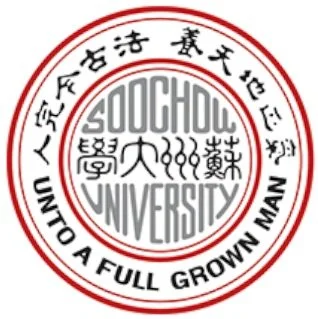





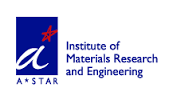












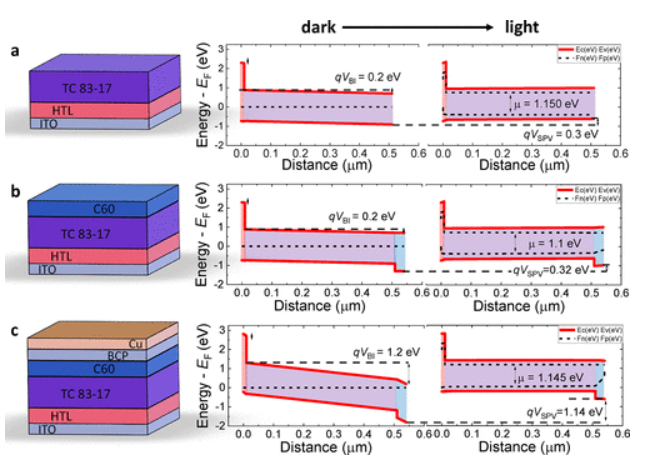

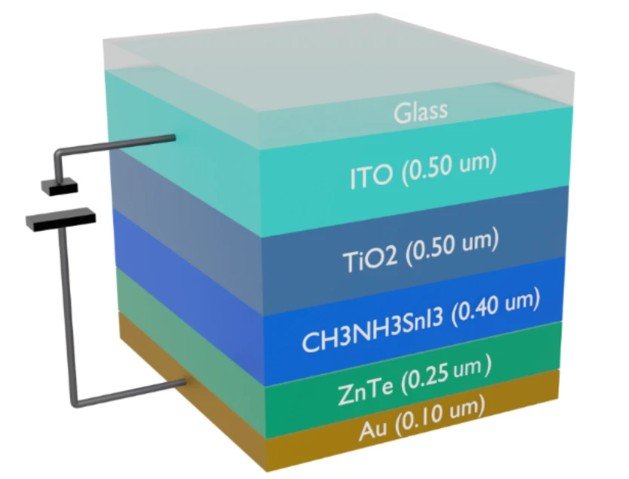
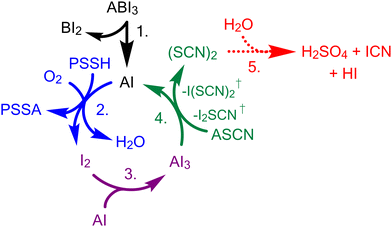
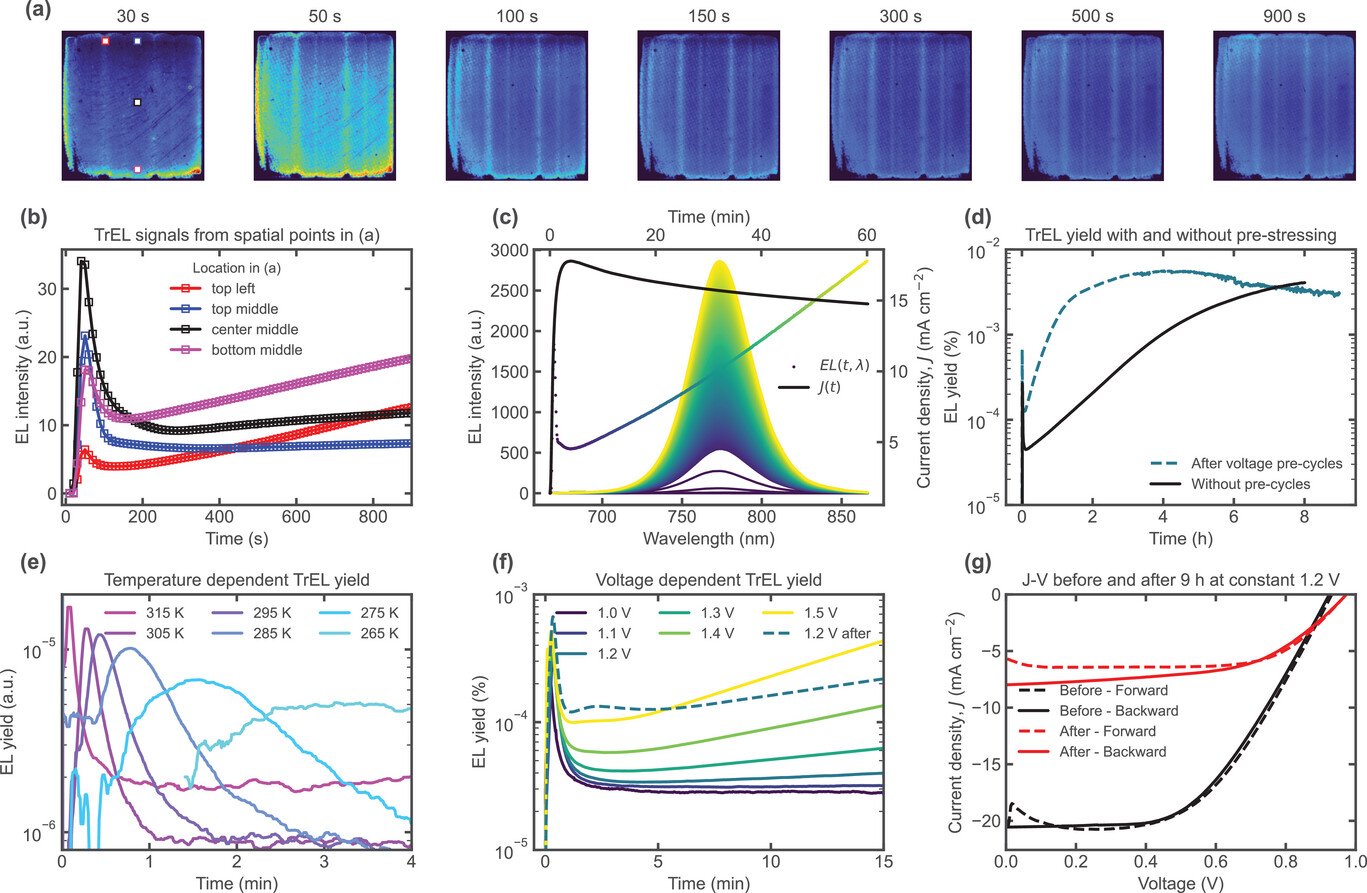






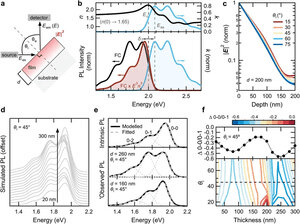
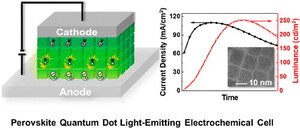


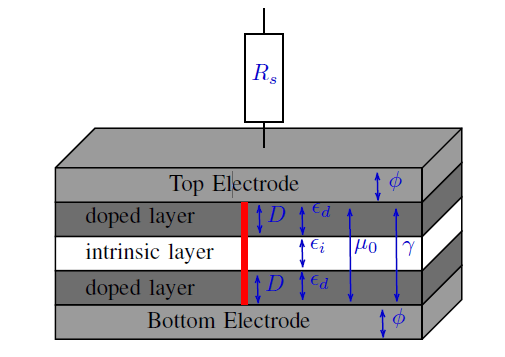







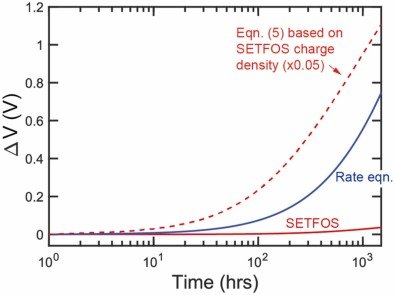


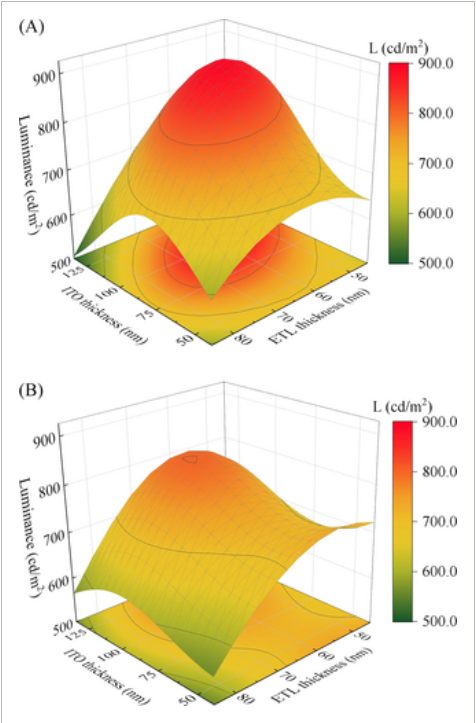
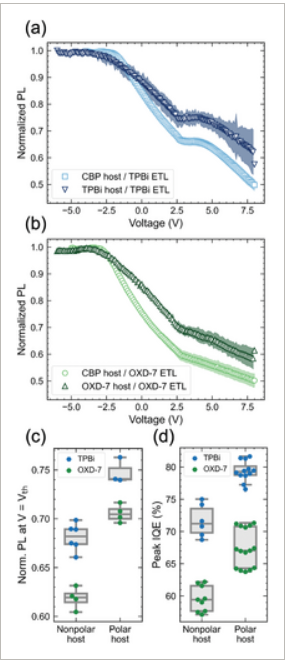

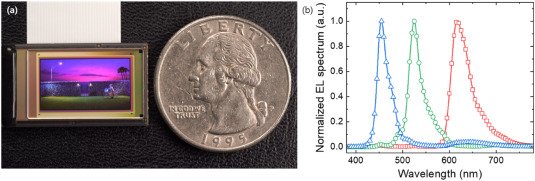
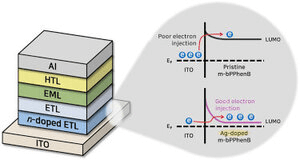
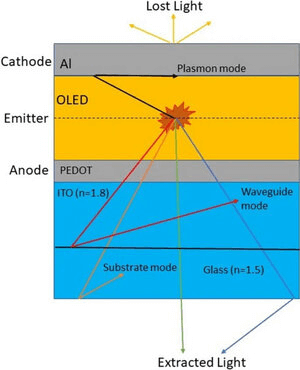
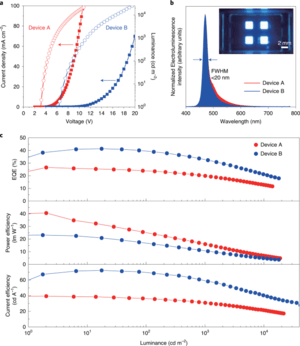
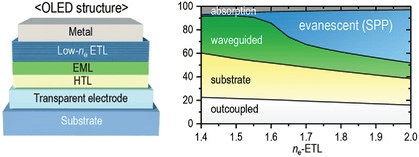
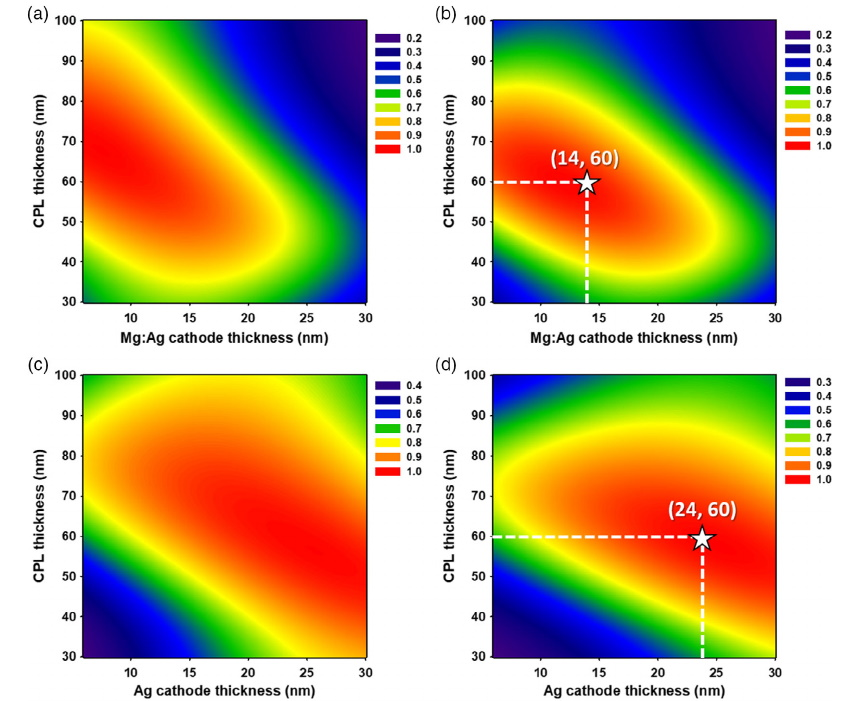
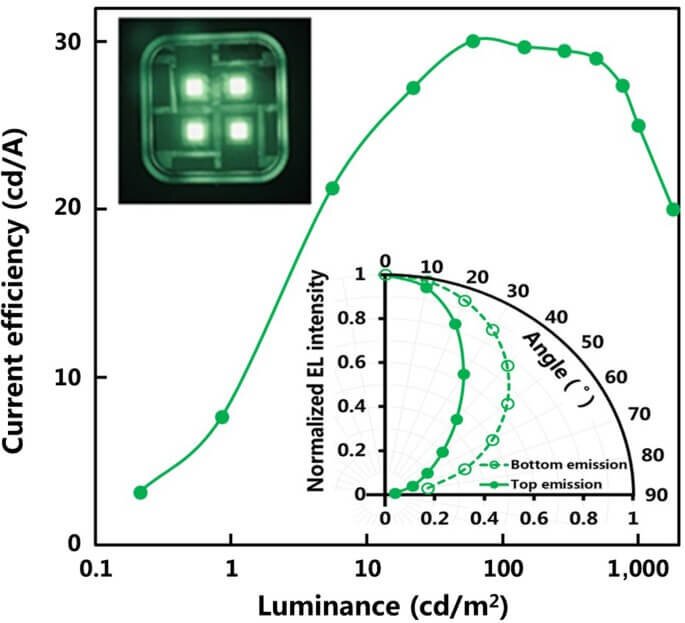
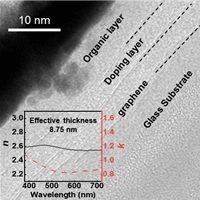





Rodriguez-Perez, J.J., Esparza, D., Ans, M., Contreras-Solorio, D.A., Diaz Perez, T., Rodriguez-Pereira, J., Barea, E.M., Zarazua, I., Prochowicz, D., Akin, S., Martinez-Pastor, J.P., Pascual, J., Mora-Seró, I. and Turren-Cruz, S.-H. (2025), Dual Interface Modification for Reduced Nonradiative Recombination in n−i−p Methylammonium-Free Perovskite Solar Cells. ACS Appl. Mater. Interfaces, 17, 8610−8618.